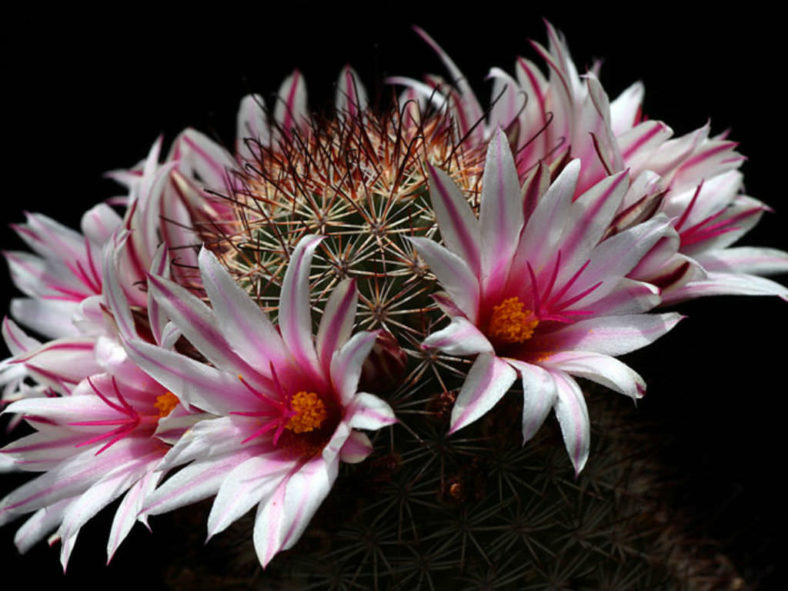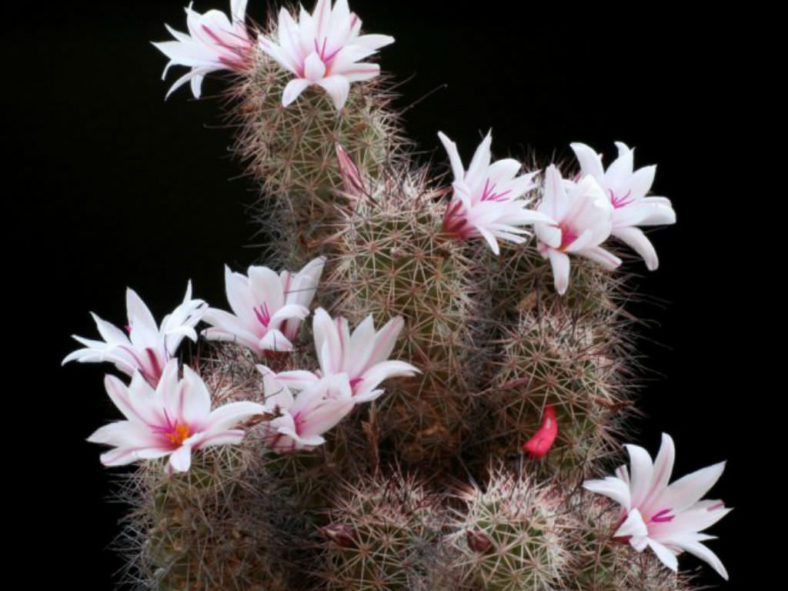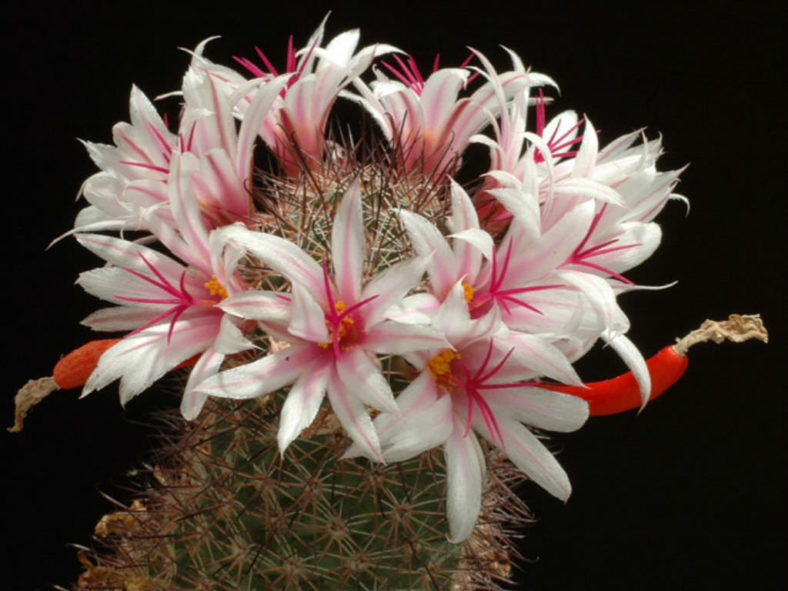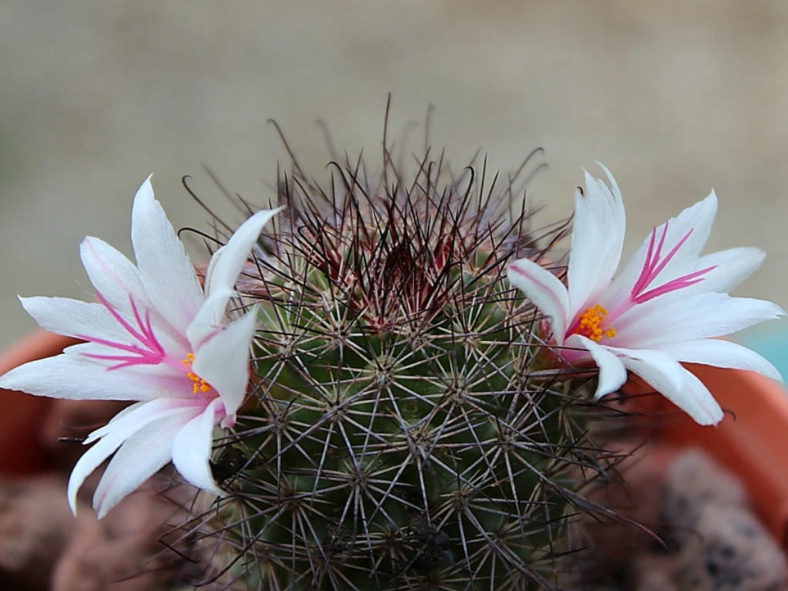Scientific Name
Cochemiea fraileana (Britton & Rose) P.B.Breslin & Majure
Synonym(s)
Bartschella albicans subsp. fraileana, Chilita fraileana, Ebnerella fraileana, Mammillaria albicans subsp. fraileana, Mammillaria albicans f. fraileana, Mammillaria fraileana, Neomammillaria fraileana
Scientific Classification
Family: Cactaceae
Subfamily: Cactoideae
Tribe: Cacteae
Genus: Cochemiea
Etymology
The specific epithet "fraileana" (pronounced "fry-lee-AY-nuh") honors the Spaniard Manuel Fraile (* 1850), who curated the cactus collection of the United States Department of Agriculture.
Origin
Cochemiea fraileana is native to central Mexico (Baja California).
Description
Cochemiea fraileana, formerly known as Mammillaria fraileana, is a small cactus with cylindrical stems covered with piramidal tubercles, each tipped with a cluster of spines. It can grow up to 6 inches (15 cm) tall and slowly produce offsets, forming a small clump over time. The stems are green or reddish in full sun and can reach a diameter of 1.6 inches (4 cm). Each areole bears 11 to 12 white radial spines, measuring up to 0.4 inches (1 cm) in length, and 3 to 4 (one hooked) dark brown central spines that can grow up to 0.4 inches (1 cm) long.
The flowers can reach a diameter of 1.2 inches (3 cm) and have light pink petals with a darker pink median line.

How to Grow and Care for Cochemiea fraileana
Hardiness: USDA hardiness zones 9b to 11b: from 25°F (-3.9°C) to 50°F (10°C).
To encourage better flowering, allow the plants to enjoy a cooling period in the winter and suspend watering. Unlike many other cacti, which use their ribs as storage devices, Mammillaria feature raised tubercles, from which spines emerge. When you water, the tubercles expand to allow for increased water storage. The flowers emerge from the axils of these tubercles on the previous year's growth, which accounts for their interesting halo effect. The cactus mustn't be exposed to prolonged dampness or standing water. Never let your cactus sit in a dish of water. Lastly, fertilize during the growing season for the best results.
Repot as needed, preferably during the warm season. To repot Mammillaria, ensure the soil is dry before repotting, then gently remove the pot. Knock away the old soil from the roots, removing any rotted or dead roots. Treat any cuts with a fungicide. Place the plant in its new pot and backfill it with potting soil, spreading the roots out as you repot. Leave the plant dry for a week or so, then begin to water lightly to reduce the risk of root rot.
Learn more at How to Grow and Care for Mammillaria.
Links
- Back to genus Cochemiea
- Succupedia: Browse succulents by Scientific Name, Common Name, Genus, Family, USDA Hardiness Zone, Origin, or cacti by Genus
Photo Gallery
Click on a photo to see a larger version.


